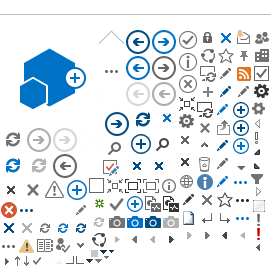
GERHARD VAN DEVENTER
Senior Fintech Analyst in the South African Reserve Bank’s Fintech Unit focussed on financial market innovation (including being the product owner for Project Khokha) and co-leading the IFWG’s Regulatory Sandbox.
|
HERCO STEYN
Senior Fintech Analyst in the South African Reserve Bank’s Fintech Unit where he focuses on crypto assets, stablecoins and emerging forms of private ‘money’.
|
Tokenisation or ‘smokenisation’: Do tokens provide real efficiencies and benefits?
By Gerhard van Deventer and Herco Steyn | 06 September 2021
Introduction
In our previous blog in this series titled ‘From digitalisation to tokenisation’ we explored what we view as tokenisation. This blog builds on the broad overview provided and explores the business and operational implications of tokenisation, specifically on financial market trades in order to consider whether tokenisation holds business value or whether proponents are just blowing smoke (hot air). The next blog in the series will explore policy, legal and regulatory implications.
The most widely touted benefit of tokenisation – real-time settlement
[1] – is already possible with existing systems. Interestingly, however, it is not technology that delays trading, clearing and settlement, but rather business reasons, such as preference for a post-funded market and regulation dictating certain market behaviours. There would therefore have to be significant benefit to the broader system for the market to move to a pre-funded model. The Organisation for Economic Co-operation and Development (OECD) also stresses the need for a solid business case, i.e., demonstrable and practical benefits in addition to real-time settlement, before a broad uptake of tokenisation of financial assets will become a reality. The OECD further stresses that markets characterised by low efficiency, safety and trust; multiple layers of disintermediation; and low levels of liquidity would be the ones most likely to take up tokenisation (2020: 8).
Overview of securities trades
We considered the life cycle of a securities market transaction to have three phases, namely:
1.trade: including asset pricing, issuer on-boarding, deal structuring, issuance, primary market and secondary market;
2.post-trade: including clearing [2] and settlement [3] ; and
3.security services: including dividend payments and corporate actions..
Tokenisation could affect all three phases e.g. in the form of on-chain securities registries (trade); automated delivery-versus-payment and settlement [4] (DvP) (post-trade); and regulatory reporting (security services) (OECD, 2020: 24). According to the Asia Securities Industry and Financial Markets Association (ASIFMA) a move to tokenisation, should it happen, would likely happen in a phased manner (2019: 3). It may, for instance, start with specific securities or a specific part of the value chain. Tokenisation could further impact existing roles and responsibilities with far-reaching business and operational implications, for instance through the creation of new roles.
The business impact of tokenisation
 We next consider the potential business and operational impact of tokenisation by assessing how tokenisation might impact the securities trading process. This is done by comparing the roles and functions performed on distributed ledger technology (DLT) to the roles and functions performed by the five current financial market infrastructures (FMIs), namely:
We next consider the potential business and operational impact of tokenisation by assessing how tokenisation might impact the securities trading process. This is done by comparing the roles and functions performed on distributed ledger technology (DLT) to the roles and functions performed by the five current financial market infrastructures (FMIs), namely:
payment systems;
securities settlement systems (SSSs);
central counterparties (CCPs);
central securities depositories (CSDs); and
trade repositories (TRs) (CPSS-IOSCO, 2012: 7).
According to the Depository Trust and Clearing Corporation (DTCC), which provides securities clearing and settlement services in the United States, the design of the DLT platform used to issue the security tokens, which it calls a ‘security token platform’ (abbreviated as STP in this blog), affects how a securities trade is executed (2019: 10). Factors could include: the use of smart contracts; the use of a cash- and/or securities-ledger; wallet use; and whether the DLT is permissioned (“private, closed or restricted”) or permissionless (“public, open and unrestricted”) (DTCC, 2019: 5-10). Whether an off-chain security is tokenised or issued natively on-chain may result in different operational and regulatory implications (OECD, 2020: 24). Further, where the platform is on the continuum between a centralised and decentralised governance and ownership model, it would also result in different business and operational impacts (in turn impacting on its regulation).
Trade
As always, there are benefits and risks associated with both the existing and much-touted DLT operating models. For example, opening up markets through tokenisation may expose buyers to less bankable issuers, while there may also be a lack of advisors on deals, which means that increased due diligence may be required at the on-boarding of issuers (ASIFMA, 2019: 14). Tokenisation may also introduce pre-issuance execution risk requiring legal clarity and diligence (ASIFMA, 2019: 14). The bookbuilding process could happen almost real-time and transparently on DLT, with the DLT serving as the master book (ASIFMA, 2019: 29).

Trade
From a trade perspective, should tokenisation proliferate, trust may be distributed between the nodes on a DLT network, which means that a trusted central authority, or middleman, may not be required to establish and validate the relationship between transacting parties – enabling investors to act as broker-dealers amongst themselves. Decentralised markets [5] , which automate market-making and therefore disintermediate the market makers, who provide liquidity – particularly during times of stress – may increase volatility in the market. STPs may, however, offer market-making services while others may still prefer brokers (OECD, 2020: 7, 24-25). Tokenisation is therefore a double-edged sword when it comes to liquidity: on the one hand it could bring liquidity to near-illiquid assets such as property by tokenising smaller ‘pieces’ of such assets
and offering them to a wider range of investors, while on the other hand it could split liquidity between on- and off-chain markets of the same asset. Moving the liquidity to a DLT platform may dry up liquidity outside of it, thereby opening up arbitrage opportunities (OECD, 2020: 7, 40).
Repurchase transactions for the funding of positions (i.e. where positions are funded by borrowing from financial institutions at the prevailing policy rate) could also be affected along with securities lending activities used in trading strategies as performing these activities using DLT may result in faster and direct unwinding of collateral, easier mobilisation of collateral across security pools, lower capital intensity and more efficient balance sheet use. The downside, however, is that each transaction would have to be fully funded and netting would not be possible (OECD, 2020: 7, 26, 40). While fully funded transactions may be possible – and even preferable – over the longer term, the practical challenges of moving to a fully funded model are potentially vast. For example, the current partial funding requirements and netting arrangements have a ‘money multiplier’ effect, which means that more transactions of higher value can be concluded than with a fully funded model, which may have some unintended consequences.
STPs could further enhance transparency, reduce information asymmetry and improve price discovery (OECD, 2020: 40). STPs could also increase automation (through disintermediation and smart contracts) and reduce reconciliation through a shared ownership ledger (registrar) (ASIFMA, 2019: 25). The lack of interoperability between STPs and the trading of an asset both on- and off-chain may, however, result in fragmented trading (OECD, 2020: 40).
Post-trade
Tokenisation enables both clearing and settlement – historically two separate activities – to take place on the DLT platform, which could speed up clearing and settlement to near real-time by essentially collapsing these roles. In turn, this may reduce counterparty and settlement risk, reduce margin requirements and free up collateral, which could then result in capital efficiencies for the parties involved in the trade (ASIFMA, 2019: 14, 29-30; OECD, 2020: 8, 24). Traditionally CCPs help to reduce counterparty risk by taking responsibility for both sides of a trade to ensure that trades are matched and executed even if one party should default, while CSDs may record transactions and provide custody services to ensure safe delivery of the money and security in a trade and handling settlement
 (through a SSS) of a transaction (OECD, 2020: 32). By contrast, STPs, including direct trading and most recently decentralised exchange protocols, may result in the collapsing of roles on the DLT platform and the subsequent disintermediation of certain historical role players, such as the FMIs identified earlier (ASIFMA, 2019: 14). The DLT platform serves as a single, shared and immutable transaction ledger, which in theory could also match trades, perform on-chain clearing and settlement, and provide custody services. This theoretical promise does, however, still need to be fully assessed, rigorously tested and appropriately quantified through real-life application. A challenge, for example, may be that the DLT may not be implemented throughout the full business process and that some degree of back-office reconciliation may still be required (OECD, 2020: 32-33).
(through a SSS) of a transaction (OECD, 2020: 32). By contrast, STPs, including direct trading and most recently decentralised exchange protocols, may result in the collapsing of roles on the DLT platform and the subsequent disintermediation of certain historical role players, such as the FMIs identified earlier (ASIFMA, 2019: 14). The DLT platform serves as a single, shared and immutable transaction ledger, which in theory could also match trades, perform on-chain clearing and settlement, and provide custody services. This theoretical promise does, however, still need to be fully assessed, rigorously tested and appropriately quantified through real-life application. A challenge, for example, may be that the DLT may not be implemented throughout the full business process and that some degree of back-office reconciliation may still be required (OECD, 2020: 32-33).
Disintermediation and process efficiencies introduced by the technology may introduce cost savings, which may in turn increase market participation and increase trading volume. Decentralised trading may further take place 24/7 on multiple exchanges and networks (OECD, 2020: 31), which may increase access but similarly increase business and operational risk. Depending on the DLT platform and operating model there may be legal uncertainty surrounding legal settlement finality [6] because settlement may only be probabilistic (with certain consensus mechanism it may take longer to confirm that a transaction cannot be reversed e.g. through a soft fork [7] ), and DLT platforms serving as market infrastructure in tokenised markets are still immature at the current conjuncture, thus rendering it unsuitable for broad-based adoption in the near future (ASIFMA, 2019: 14). The current post-trade multi-step process could be simplified through the application of DLT, for instance by combining confirmation (i.e. comparing instructions by counterparties to a trade before passing them on for settlement), affirmation (i.e. agreeing to conditions of a trade), allocation (i.e. how securities are apportioned) and settlement (i.e. transferring securities into the account of the buyer and money into the account of the seller) into a single-step, thereby reducing the back-office administration burden through the use of DLT platforms (ASIFMA, 2019: 29-30, OECD, 2020: 8).
Securities services
STPs could facilitate securities servicing, such as reporting and processing dividends and other distributions; shareholder lawsuits, voting and notices; and processing corporate actions, including mergers and stock splits (DTCC, 2019: 22). This could be enabled by smart contracts and may eliminate some of the functions of a central registrar, transfer and/or exchange agent. DLT platforms may enable easier administration of record dates and simplified maintenance of security-holder records and administration of employee scheme plans (ASIFMA, 2019: 14).
Tokenised markets may further potentially enable easier transfer and custody of security tokens should legal and regulatory frameworks enable this. Where existing assets are tokenised, the underlying assets will need a custodian and/or trustees to hold the assets, while investors may also require custodians to securely hold their tokenised assets in digital wallets (ASIFMA, 2019: 14, 21-23). Various inherent risks, including but not limited to the failure of the tokenised security, fraud, performance issues and cybersecurity concerns do still exist in DLT platforms (ASIFMA, 2019: 16).
Conclusion

Tokenisation in financial markets is changing the nature of how financial instruments are bought and sold. STPs, however, are still nascent and whether it will result in mass adoption is yet to be determined. It is therefore too early to determine whether tokens may be ‘smokin hot’ (pure fire) or ‘smokenisation’ (hot air). A number of hindrances to the large-scale adoption of STPs, includes governance issues; legislative and regulatory uncertainty; scalability; probabilistic settlement finality; operational risk; and interoperability challenges (OECD, 2020: 19). Pre-funding increases the costs of capital; credit; cash; and collateral, and complicates allowing techniques such as short-selling; securities financing; market-making; and transaction netting which enhances the liquidity in securities markets. This means that there is a trade-off between pre- and post-funded markets, that is, between reducing counterparty and settlement risk on DLT on the one hand, and liquidity preferences on the other (ASIFMA, 2019: 30). In order for a large-scale transition to tokenised markets there would have to be:
strong business rationale (what does DLT solve for?);
technical feasibility providing significant advantage; and
economic rationale for the transition (OECD, 2020: 21).
It remains to be seen how revolutionary tokenisation may become. Ultimately it will have to prove that it is a smart and sustainable solution which people will trust with their money. We will explore the policy, legal and regulatory implications of tokenisation in a subsequent blog and the Project Khokha report will also provide some insights from practical experimentation.
Bibliography
ASIFMA (2019) Tokenised Securities: A Roadmap for Market Participants and Regulators. Asia Securities Industry & Financial Markets Association (ASIFMA). Available from:
https://www.asifma.org/wp-content/uploads/2019/11/tokenised-securities-a-roadmap-for-market-participants-final.pdf [Accessed on 3 May 2021]
Committee on Payment and Settlement Systems (CPSS) and Technical Committee of the International Organisation of Securities Commissions (IOSCO) (2012) Principles for financial market infrastructures. Bank for International Settlements and International Organisation of Securities Commissions. Available from:
https://www.bis.org/cpmi/publ/d101a.pdf [Accessed on 16 May 2021]
DTCC (2019) Guiding principles for the post-trade processing of tokenized securities. Depository Trust & Clearing Corporation. Available from:
https://www.dtcc.com/-/media/Files/Downloads/WhitePapers/Crypto-Asset-Whitepaper-2019.pdf [Accessed on 3 May 2021]
OECD (2020) The tokenisation of assets and potential implications for financial markets. Organisation for Economic Co-operation and Development (OECD) Blockchain Policy Series. Available from:
http://www.oecd.org/finance/The-Tokenisation-of-Assets-and-Potential-Implications-for-Financial-Markets.htm [Accessed on 4 May 2021]
..................................................................................................................................................................................................................................................................................................................................................................
SHARE THIS BLOG





 Disclaimer: As the IFWG we are enthusiastic to include diverse voices through our media content. The opinions of participants do not necessarily represent the views of the IFWG and their respective organisations.
Disclaimer: As the IFWG we are enthusiastic to include diverse voices through our media content. The opinions of participants do not necessarily represent the views of the IFWG and their respective organisations.
